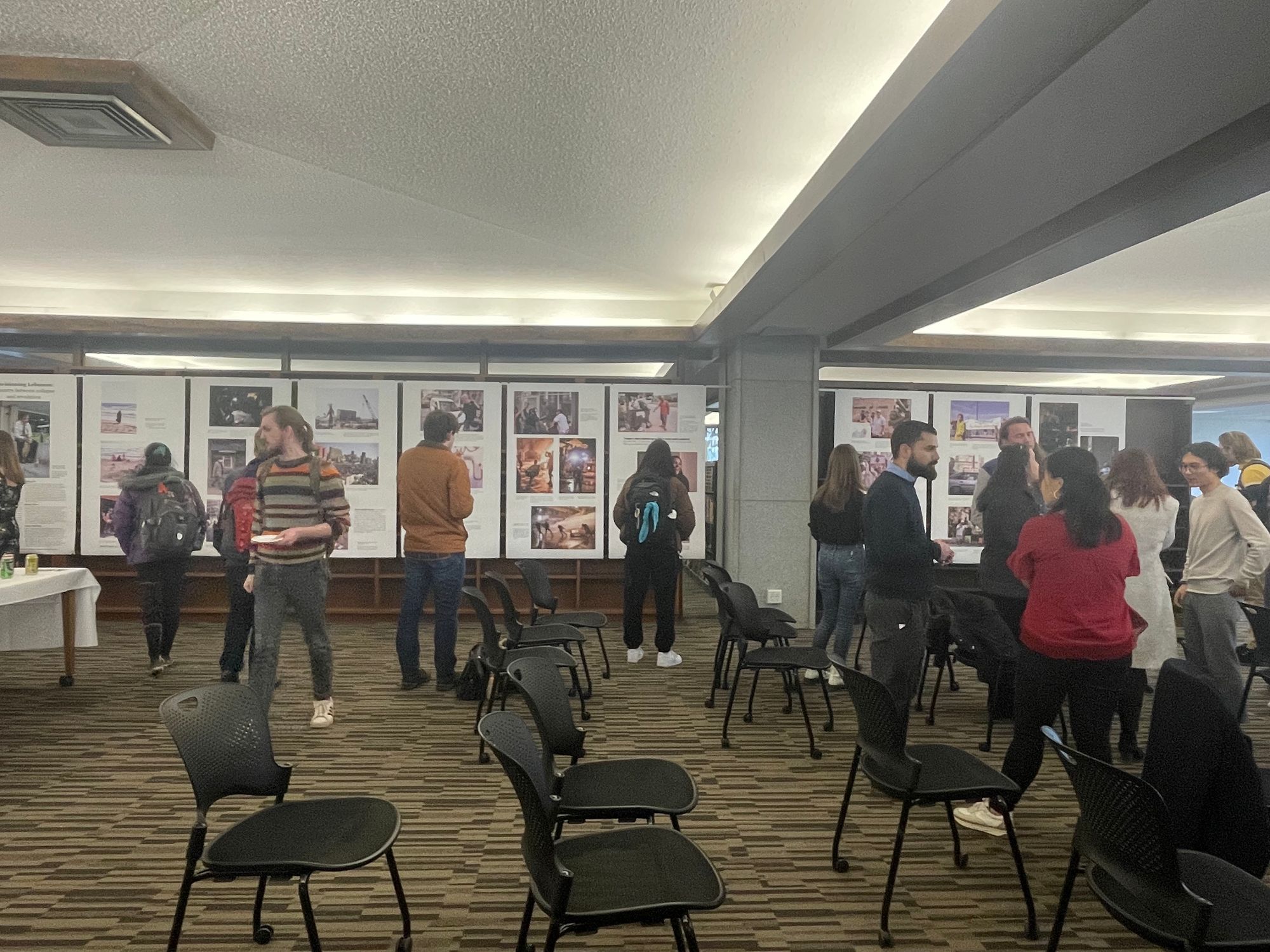“Envisioning Lebanon”: Politics and Photography

On March 21, a photography exhibition titled “Envisioning Lebanon: a country between collapse and revolution” opened in Frost Library. A collaboration between Hantong Wu ’23 and photojournalists Nabeel Yakzan and Hunter Williamson, the collection depicts the impacts of economic catastrophe and political uprising in the streets of Beirut.
Wu, an Asian languages and civilizations major, organized the exhibition as his senior thesis. His interest in the project began during an Arabic language program at the American University of Beirut. Having grown up listening to news reports about violence and war in the Middle East, Wu decided to learn more about the region in college.
“When I got [to Amherst], I decided I would learn Arabic and get to know this region that has fascinated me for a long time,” he said in an interview with The Student.
Yakzan, a Lebanese expatriate who grew up in the United Arab Emirates, returned to the country in 2017 to study engineering at the American University of Beirut. He started out as a street photographer, but was quickly propelled into the world of photojournalism, partly through the political and economic unrest he witnessed in Beirut.
“I photograph a lot of things related to the passing of time [and] how wars affect people in their everyday lives. Through street photography, you’re able to capture the everyday lives of people, but at the same time capture how the politics around them affects them,” explained Yakzan.
Williamson, who was unable to attend the opening reception on Tuesday, is a journalist and a student at the American University of Beirut.
The photographs on display, taken between 2019 and 2022, track the aftermath of a series of disasters following the country’s financial collapse in 2019. According to the exhibit’s curatorial statement, the collapse came after “decades of intentional mismanagement by the elites” leading to protests throughout the city and calling for the removal of the elite-ruled government.
In 2020, improperly stored ammonium-nitrate exploded at the Port of Beirut. It took hundreds of lives and caused billions of dollars worth of damage, exacerbating the nation’s financial stress. These moments of calamity compounded decades-long tensions among the country’s three main religious groups — Maronite Christians, Shiite Muslims, and Sunni Muslims. International tensions with Iran and Israel, as well as the struggle to house millions of Syrian and Palestinian refugees, also reached a boiling point in the past years.
“Tracing these catastrophes and movements, these photographs sketch the multifaceted reality and allow the ordinary people on the streets to tell their visions of Lebanon, a country suspended between collapse and revolution,” reads the curatorial statement.
Both Wu and Yakzan emphasized their desire not only to document the political and economic crises, but to depict images of how ordinary citizens are impacted by the crises daily. “Normalcy is humanizing,” Wu said during his opening remarks. “Normalcy is important because a collapse is a lived experience, and we need to know how people interact with and respond to the collapse.”
“Statistics have real-world repercussions,” said Yakzan in his remarks, echoing Wu’s sentiments. Yakzan believes that these consequences are best captured “through the lens of a camera.”
The exhibition’s photographs accomplish these goals both as part of a collective and as individual standalone pieces — they range from depictions of families playing at the beach to protesters filling the streets.
One image shows a group of men playing a card game lit by flashlight during a blackout. Another shows a physical altercation between members of the Lebanese Internal Security Forces and a protester. This contrast between the depictions of the political unrest itself and the consequences felt in the lives of Lebanese citizens provides a balance of education about the past few years, but still creates a sense of empathy for viewers of the exhibition.
One photograph’s caption which depicts a man wearing a mask walking past a vandalized ATM, reads, “Unlike other forms of violence, financial violence eludes justice as the Lebanese state continues to grant impunity to the failed Lebanese banking sector.”
For Yakzan, the collection poses important questions to an American audience about our own political status quo. “Why doesn’t the American public look into more direct action and revolution themselves?” he asked. “I think what I want from the exhibition is a sort of warning message as well.”
Yakzan also wants the exhibit to provide “a look into the Orient.” He explained that “all of the problems in the Middle East are an imperialist issue.”
For Wu’s part, he wants the exhibit to convey “the complexity of the events under the news headlines.” He also wants viewers of the collection to reflect on the “human connections and emotions” wrapped up in the images.